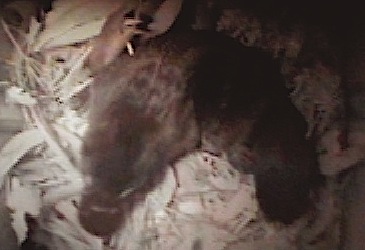Search
Recent comments
- the start....
21 min 56 sec ago - blame "russia".....
8 hours 15 min ago - priority targets.....
8 hours 20 min ago - "doomed"....
9 hours 57 min ago - no retaking.....
10 hours 34 min ago - connections....
12 hours 51 min ago - donald lies....
15 hours 12 min ago - not laughing....
16 hours 15 min ago - collapse....
21 hours 8 min ago - dems in on it....
21 hours 18 min ago
Democracy Links
Member's Off-site Blogs
flat-footed about the vulnerable platypus...
A lack of research into platypus numbers is leaving the iconic mammal vulnerable to extinction, an expert has warned.
The platypus is predominantly found along the Great Dividing Range, in parts of Tasmania, across the eastern seaboard and in an isolated pocket of South Australia.
It can also be found close to major population centres such as in the Yarra River, just 10 kilometres from Melbourne's CBD.
In 2014 the International Union for Conservation of Nature (IUCN) raised the status of the platypus from least concerned to near-threatened.
But Centre for Environmental Stress and Adaptation Research (CESAR) senior ecologist Josh Griffiths said no-one really knew for sure how many platypuses there were in the wild.
"The problem is no-one's really looking," Mr Griffiths said.
"And that's one of the real issues with platypus conservation — there is no reliable way of estimating platypus numbers, even at a local scale.
Read more:
https://www.abc.net.au/news/2018-11-10/platypus-vulnerable-to-extinction...
- By Gus Leonisky at 10 Nov 2018 - 3:25pm
- Gus Leonisky's blog
- Login or register to post comments

and the yabby trap...
The biggest threat to the platypus is the loss of habitat, especially land clearing and dams that disrupt the natural water flow, and predation. Natural enemies of the platypus include snakes, water rats, goannas, and introduced animals such as foxes, cats and dogs.
Entanglement in litter, especially discarded fishing line, and yabby traps cause many drowning deaths of platypus.
Read more:
https://www.environment.nsw.gov.au/topics/animals-and-plants/native-anim...
and bushfires...
Australia’s platypus population has declined so drastically that scientists now say the elusive egg-laying mammal should be classified as a threatened species.
The platypus, known for its paddle-shaped tail and flat bill, is being driven out of rivers at alarming rates, a new report by the University of NSW shows.
Last summer’s bushfires have furthered threatened their survival.
The 2019-2020 bushfires took a devastating toll on Australian wildlife, killing an estimated 1.25 billion animals and destroying 10 million hectares of bush habitat.
The east coast – NSW’s south coast and Victoria’s Gippsland – was the worst-affected region.
On Monday, Ms Ley will announce an $18 million koala assistance package that will go towards veterinary work, habitat restoration and a ‘census’ to find out how many koalas survived after the Black Summer fires.
Considering the distressing videos and photos of burnt koalas that came out during the fires, it’s understandable public focus has been on the recovery of land animals.
The platypus, which lives in Tasmania and along the east coast of the mainland, has now emerged as a hidden victim.
Modelling by the UNSW researchers suggests about 13.5 per cent of platypus habitat was damaged by the bushfires.
Read more:
https://thenewdaily.com.au/news/national/2020/11/23/platypus-bushfire-impact-threatened-species/
Read from top.
first platypus refuge in australia...
Conservationists in Australia have announced exciting plans to open the world's first platypus refuge.
The mammals are close to extinction following bushfires and drought.
See: https://www.bbc.com/news/av/world-australia-56267954
Read from top.